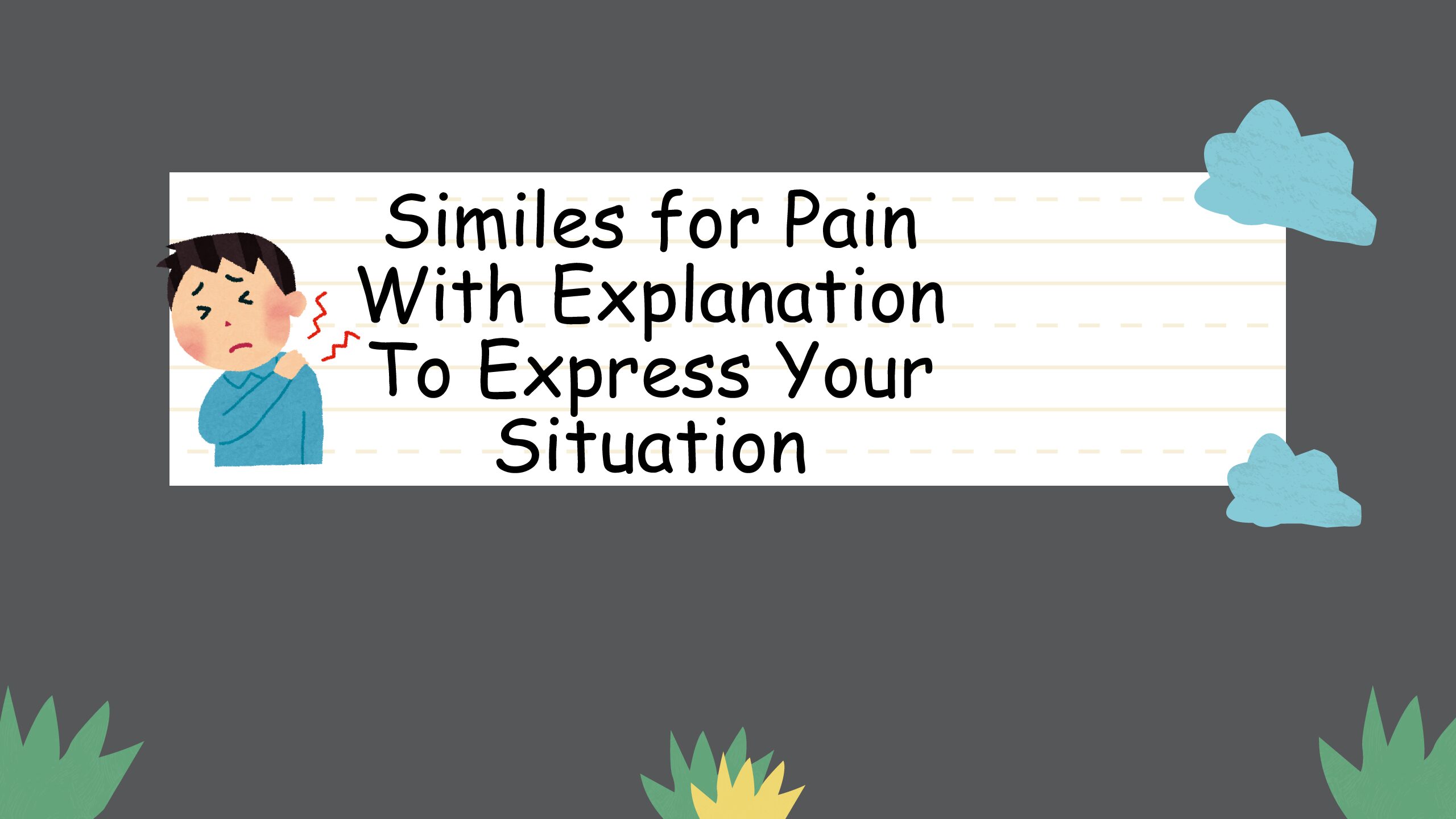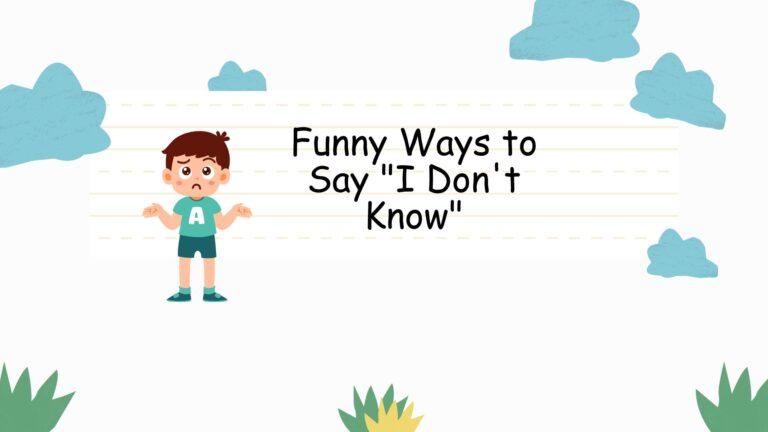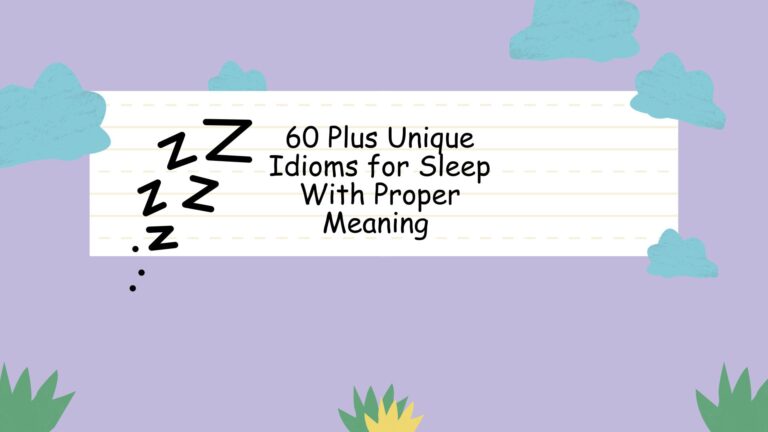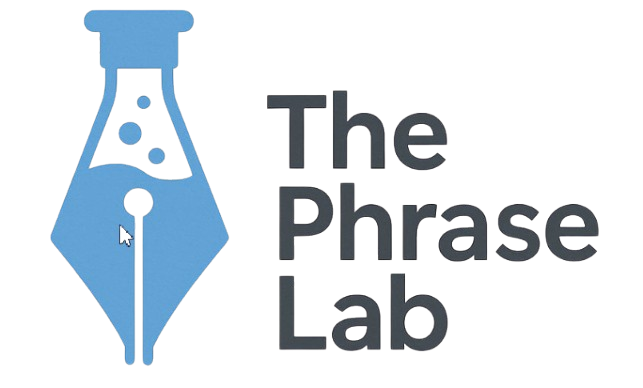
Family Metaphors: Understanding Figurative Language
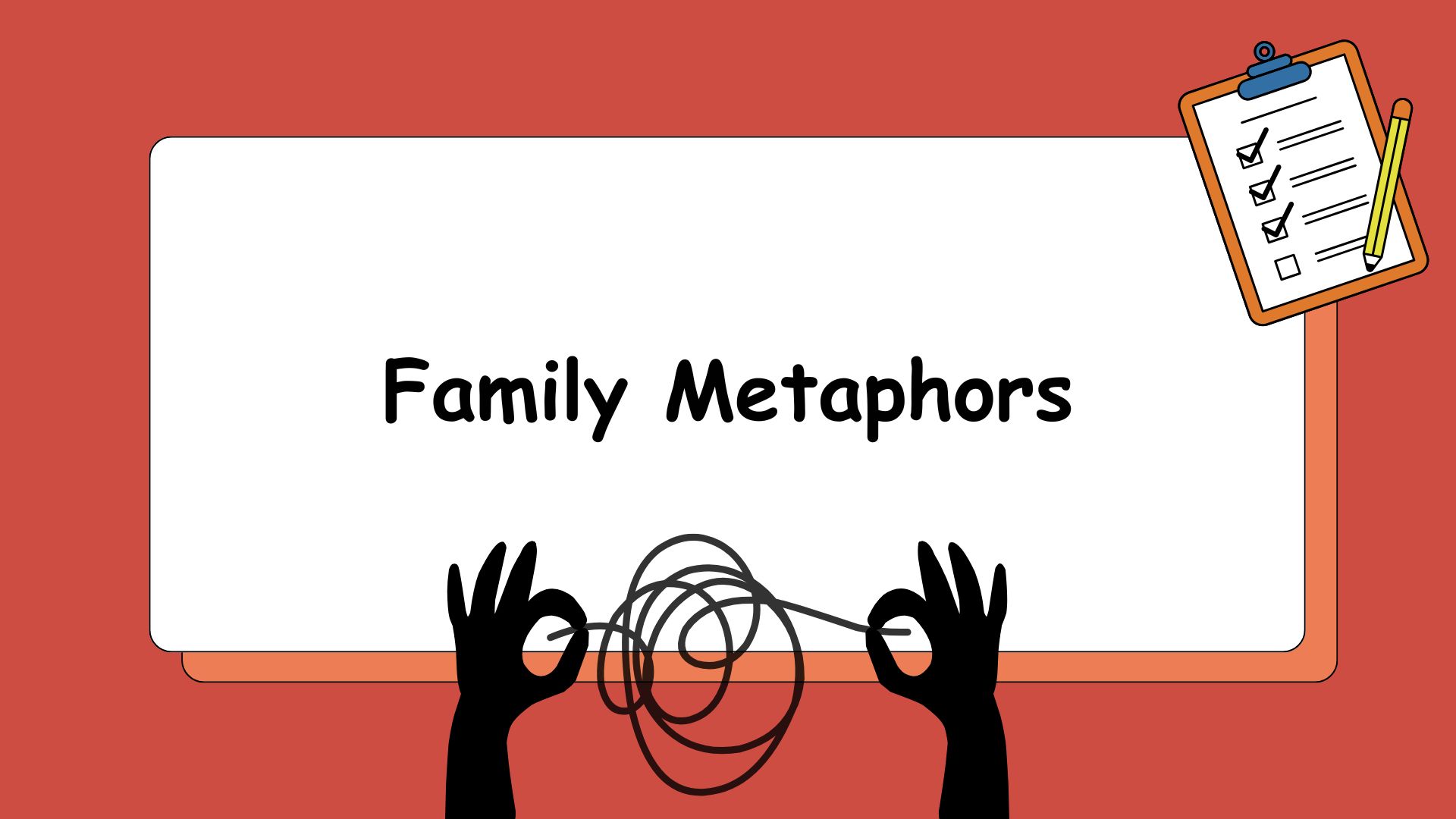
Metaphors are powerful tools in the English language, allowing us to understand complex concepts by relating them to more familiar ones. When it comes to family, metaphors can be particularly insightful, revealing the depth and nuances of familial relationships. Understanding these metaphors enhances our comprehension of literature, everyday conversations, and even our own family dynamics. This article will explore various types of family metaphors, their structures, and how to use them effectively, benefiting students, writers, and anyone interested in a deeper understanding of language and relationships.
This comprehensive guide will cover everything from basic definitions to advanced usage, providing numerous examples and practice exercises to solidify your understanding. By the end of this article, you’ll be able to identify, interpret, and use family metaphors with confidence and precision, enriching your communication and analytical skills.
Table of Contents
- Introduction
- Definition of Metaphor
- Structural Breakdown of Family Metaphors
- Types and Categories of Family Metaphors
- Examples of Family Metaphors
- Usage Rules for Family Metaphors
- Common Mistakes with Family Metaphors
- Practice Exercises
- Advanced Topics in Family Metaphors
- Frequently Asked Questions
- Conclusion
Definition of Metaphor
A metaphor is a figure of speech that directly compares two seemingly unrelated things to suggest a resemblance or shared quality. Unlike similes, which use words like “like” or “as” to make comparisons, metaphors state that one thing is another. Metaphors are essential for conveying abstract ideas, adding vividness to language, and creating deeper meaning in both literature and everyday communication.
In the context of family, metaphors allow us to understand complex relationships, roles, and dynamics by comparing them to more tangible or relatable concepts. This figurative language helps us express the often intricate and emotional aspects of family life in a more accessible and meaningful way. By using metaphors, we can highlight specific qualities, functions, or challenges within a family unit.
Structural Breakdown of Family Metaphors
Family metaphors typically consist of two main elements: the tenor and the vehicle. The tenor is the subject being described (in this case, the family or a specific aspect of it), and the vehicle is the object or concept to which the tenor is compared. Understanding this structure helps in both interpreting and creating effective metaphors.
For example, in the metaphor “Our family is a well-oiled machine,” the tenor is “our family,” and the vehicle is “a well-oiled machine.” The comparison highlights the efficiency, coordination, and interdependence of the family members. Let’s break down the structure further:
- Tenor: The family, its members, or a specific relationship within the family.
- Vehicle: The object, concept, or idea used to describe the family (e.g., a tree, a team, a garden).
- Ground: The shared characteristics or qualities between the tenor and the vehicle that make the metaphor meaningful (e.g., growth, support, collaboration).
Identifying these elements allows for a deeper understanding of the metaphor’s intended meaning and its impact on the listener or reader. By recognizing the tenor, vehicle, and ground, we can fully appreciate the nuances and implications of the comparison being made.
Types and Categories of Family Metaphors
Family metaphors can be categorized based on the vehicle used to describe the family. Each category highlights different aspects of family life, emphasizing particular qualities or functions. Below are some common categories of family metaphors:
Family as a Tree
This metaphor emphasizes roots, growth, and interconnectedness. The roots represent ancestry and heritage, the trunk symbolizes strength and stability, the branches represent the different generations and family members, and the leaves symbolize the individual lives that flourish within the family.
Examples of this metaphor include:
- “Our family tree has deep roots in this community.”
- “She is a strong branch on our family tree.”
- “The family is like a sturdy oak, weathering every storm.”
Family as a Team
This metaphor highlights collaboration, support, and shared goals. Family members work together, each playing a specific role to achieve common objectives. Communication, cooperation, and mutual respect are key elements in this metaphor.
Examples of this metaphor include:
- “We function as a team, supporting each other’s goals.”
- “The family is a well-coordinated team, always ready to help each other.”
- “Every member of our family plays a crucial role on the team.”
Family as a Garden
This metaphor emphasizes nurturing, growth, and care. Family members are like plants in a garden, needing attention, support, and a conducive environment to thrive. The gardener (often the parents) cultivates and tends to the needs of each individual.
Examples of this metaphor include:
- “Our family is a garden, where each member is nurtured and allowed to bloom.”
- “Parents are the gardeners, carefully tending to their children’s growth.”
- “The family is a fertile ground for personal development and happiness.”
Family as a Building
This metaphor focuses on structure, stability, and foundation. The foundation represents the values and principles upon which the family is built, the walls symbolize protection and security, and the roof provides shelter and comfort.
Examples of this metaphor include:
- “The family is built on a strong foundation of love and trust.”
- “Our home is the cornerstone of our family life.”
- “The values we instill are the building blocks of their future.”
Family as a Machine
This metaphor, while less common, emphasizes efficiency, interdependence, and functionality. Each family member is a component of the machine, contributing to its overall operation. This can highlight both the positive aspects of coordination and the potential for dysfunction if one part fails.
Examples of this metaphor include:
- “Our family is a well-oiled machine, with everyone playing their part.”
- “When one part of the family breaks down, the whole machine suffers.”
- “Each member is a cog in the family machine, working together for a common purpose.”
Family as a Social Structure
This metaphor views the family as a microcosm of society, reflecting broader social norms, roles, and hierarchies. It examines how families function within and are influenced by larger societal structures, such as cultural values, economic systems, and political ideologies.
Examples of this metaphor include:
- “The family operates as a small society, complete with its own rules and customs.”
- “Our family structure mirrors the traditional hierarchies of our culture.”
- “The family is a social unit, reflecting the values and norms of the wider community.”
Examples of Family Metaphors
Below are several tables providing examples of family metaphors organized by category. Each table includes a range of examples to illustrate the variety and depth of this figurative language.
The following table illustrates the “Family as a Tree” metaphor with various examples that highlight different aspects of growth, roots, and stability.
| Metaphor | Explanation |
|---|---|
| “Our family tree has deep roots in this community.” | Emphasizes the family’s long history and connection to the area. |
| “She is a strong branch on our family tree.” | Highlights an individual’s strength and contribution to the family. |
| “The family is like a sturdy oak, weathering every storm.” | Suggests resilience and the ability to withstand challenges. |
| “He is the sapling, just beginning to grow and find his place in the family forest.” | Describes a young family member’s early development and potential. |
| “The roots of our family values run deep.” | Indicates that the family’s values are firmly established and enduring. |
| “They pruned away the negativity to allow the family to flourish.” | Implies a conscious effort to remove harmful influences from the family. |
| “The family provided fertile ground for success.” | Suggests a supportive environment that promotes achievement. |
| “Like rings on a tree, each year adds to the family’s history.” | Compares the passage of time to the growth rings of a tree, marking significant events. |
| “The family’s legacy is a towering redwood, inspiring generations.” | Describes a lasting and impactful heritage. |
| “The family is a forest, with each member a unique and valuable tree.” | Highlights the diversity and importance of each individual within the family. |
| “His words were the fertilizer that helped his children grow.” | Suggests that his guidance and encouragement fostered their development. |
| “The family’s love is the sunlight that nourishes our souls.” | Compares love to an essential element for growth and well-being. |
| “Our family is an ancient tree, bearing the fruit of wisdom and experience.” | Highlights the value of accumulated knowledge and insights. |
| “The family’s roots are intertwined, creating a strong and supportive foundation.” | Emphasizes the interconnectedness and mutual support among family members. |
| “She is the seed from which our family blossomed.” | Indicates a matriarchal figure who initiated the family’s growth. |
| “The family is a grove, providing shelter and shade to its members.” | Suggests a safe and comforting environment. |
| “Their family is a young tree, still putting down roots.” | Indicates a family in the early stages of development. |
| “He is the trunk of the family, providing strength and stability.” | Highlights a central figure who supports the family. |
| “The family’s traditions are like the leaves, changing with the seasons but always returning.” | Suggests that while traditions may evolve, they remain a constant part of the family’s identity. |
| “The family is a forest, each member contributing to its rich ecosystem.” | Highlights the interdependence and diversity within the family unit. |
| “He’s a budding branch, full of potential and promise.” | Describes a young family member with a bright future. |
| “The family’s history is etched into their hearts like rings on a tree.” | Suggests that the family’s shared experiences are deeply ingrained in their memories. |
| “They are the gardeners of their family, cultivating love and support.” | Highlights the active role of parents in nurturing their children. |
| “The family is a sheltering tree, protecting its members from the storms of life.” | Suggests a safe and supportive environment that shields family members from adversity. |

The following table illustrates the “Family as a Team” metaphor, focusing on collaboration, support, and shared goals.
| Metaphor | Explanation |
|---|---|
| “We function as a team, supporting each other’s goals.” | Emphasizes mutual support and collaboration towards individual aspirations. |
| “The family is a well-coordinated team, always ready to help each other.” | Highlights the efficiency and willingness to assist one another. |
| “Every member of our family plays a crucial role on the team.” | Indicates that each person’s contribution is essential to the family’s success. |
| “They work together like a relay team, passing the baton of responsibility.” | Suggests shared responsibility and cooperation in completing tasks. |
| “The family is a pit crew, quickly addressing each other’s needs.” | Implies a fast and efficient response to problems and challenges. |
| “They strategize like a coaching staff, planning for the future.” | Suggests careful planning and foresight in making decisions. |
| “The family is a band, each member playing their instrument in harmony.” | Highlights the importance of individual contributions working together harmoniously. |
| “They cheer each other on like a supportive audience, celebrating every victory.” | Emphasizes encouragement and recognition of achievements. |
| “The family is a crew team, rowing in unison towards a common destination.” | Suggests coordinated effort and shared direction. |
| “They operate like a surgical team, each member focused on their specific task.” | Implies precision and efficiency in achieving a shared objective. |
| “Our family is a basketball team, always passing the ball and supporting each other’s plays.” | Highlights the importance of teamwork and mutual support in achieving success. |
| “The family is a relay race, with each member running their leg and passing the baton to the next.” | Suggests that family members share responsibilities and support each other in achieving common goals. |
| “They function as a well-oiled machine, each member a cog working in perfect harmony.” | Emphasizes the efficiency and coordination of family members working together. |
| “Our family is a symphony orchestra, with each member playing their unique instrument to create a beautiful melody.” | Highlights the importance of individual contributions working together to create something beautiful. |
| “The family is a puzzle, each member a piece that fits perfectly to complete the picture.” | Suggests that each member is an integral part of the family and contributes to its overall wholeness. |
| “They are a construction crew, building their future together brick by brick.” | Implies that family members work together to create a solid foundation for their future. |
| “Our family is a team of explorers, venturing into the unknown together with courage and determination.” | Highlights the spirit of adventure and the willingness to face challenges together. |
| “The family is a garden, with each member a flower blooming in their own unique way.” | Suggests that family members nurture and support each other’s growth and individuality. |
| “They are a flock of birds, flying in formation and supporting each other along the way.” | Emphasizes the importance of mutual support and guidance in achieving shared goals. |
| “Our family is a ship, navigating the seas of life together with strength and resilience.” | Highlights the ability of family members to weather storms and overcome challenges together. |
| “The family is a quilt, each member a patch that adds to its warmth and beauty.” | Suggests that each member contributes to the overall richness and comfort of the family. |
| “They work together like a well-rehearsed dance troupe, each member knowing their steps and moving in perfect synchrony.” | Implies a high level of coordination and understanding among family members. |
| “Our family is a constellation, each member a star shining brightly in the night sky.” | Highlights the unique qualities and individual brilliance of each family member. |
| “The family is a tapestry, each member a thread that weaves together to create a beautiful and intricate design.” | Suggests that each member contributes to the overall richness and complexity of the family’s story. |
The following table illustrates the “Family as a Garden” metaphor, emphasizing nurturing, growth, and care.
| Metaphor | Explanation |
|---|---|
| “Our family is a garden, where each member is nurtured and allowed to bloom.” | Emphasizes the importance of providing a supportive environment for individual growth. |
| “Parents are the gardeners, carefully tending to their children’s growth.” | Highlights the active role of parents in fostering their children’s development. |
| “The family is a fertile ground for personal development and happiness.” | Suggests that the family provides an environment that promotes well-being and achievement. |
| “They weeded out the negativity to create a thriving family environment.” | Implies a conscious effort to remove harmful influences from the family. |
| “The family is a greenhouse, protecting its members from the harsh elements.” | Suggests a safe and nurturing environment that shields family members from adversity. |
| “They cultivated a garden of love and respect within their family.” | Highlights the importance of fostering positive emotions and attitudes. |
| “The family is a bouquet, each member a unique and beautiful flower.” | Emphasizes the diversity and individual beauty of each family member. |
| “They watered their children’s dreams with encouragement and support.” | Suggests that parents nurture their children’s aspirations and help them grow. |
| “The family is a vineyard, producing the sweet wine of shared experiences and memories.” | Highlights the value of creating lasting and meaningful connections. |
| “They pruned away the dead branches of resentment and bitterness.” | Implies a conscious effort to eliminate negative emotions and maintain healthy relationships. |
| “Our family is a field of wildflowers, each member unique and beautiful in their own way.” | Highlights the diversity and individuality of family members. |
| “The parents are the caretakers of the garden, ensuring that each child receives the love and attention they need to thrive.” | Emphasizes the importance of parental care and support in child development. |
| “The family is a greenhouse, sheltering its members from the harsh realities of the outside world.” | Suggests a safe and nurturing environment that protects family members from adversity. |
| “They cultivated a garden of trust and communication, where each member felt safe to express themselves.” | Highlights the importance of open communication and mutual trust within the family. |
| “Our family is a vibrant ecosystem, with each member playing a crucial role in maintaining its balance and harmony.” | Emphasizes the interdependence and interconnectedness of family members. |
| “The family is a sanctuary, a place where each member can find solace and renewal.” | Suggests that the family provides a safe and comforting environment for its members. |
| “They are the gardeners of their children’s souls, nurturing their spirits and helping them to blossom into their full potential.” | Highlights the importance of parental guidance and support in spiritual and emotional development. |
| “Our family is a tapestry woven with threads of love, laughter, and shared experiences.” | Emphasizes the richness and complexity of family relationships. |
| “The family is a haven, a place where each member can find refuge from the storms of life.” | Suggests that the family provides a safe and supportive environment for its members. |
| “They nourished their children’s minds with knowledge and curiosity, helping them to grow into wise and compassionate individuals.” | Highlights the importance of education and intellectual development within the family. |
| “Our family is a symphony of voices, each member contributing their unique melody to the harmony of the whole.” | Emphasizes the importance of individual expression and collaboration within the family. |
| “The family is a compass, guiding its members through the complexities of life with love and wisdom.” | Suggests that the family provides direction and support for its members. |
| “They are the architects of their family’s destiny, designing a future filled with hope and possibility.” | Highlights the active role of family members in shaping their own lives and creating a positive future. |
| “Our family is a mosaic of memories, each piece contributing to the beauty and richness of our shared history.” | Emphasizes the importance of creating and cherishing memories together. |
Usage Rules for Family Metaphors
Using family metaphors effectively requires careful consideration of context, clarity, and appropriateness. Here are some key rules to follow:
- Clarity: Ensure the metaphor is easily understood and the connection between the tenor and vehicle is clear. Avoid obscure or overly complex comparisons.
- Context: Consider the audience and the situation. A metaphor that works well in a literary context may not be suitable for a formal presentation.
- Consistency: Maintain consistency within the metaphor. Avoid mixing metaphors that create confusing or contradictory images.
- Originality: While common metaphors can be effective, strive for originality to make your writing or speech more engaging and memorable.
- Appropriateness: Choose metaphors that are respectful and sensitive to the family dynamics being described. Avoid metaphors that could be offensive or hurtful.
Key Considerations for Effective Usage:
- Understand the Nuances: Different metaphors emphasize different aspects of family life. Ensure that the metaphor you choose aligns with the message you want to convey. For example, using “family as a fortress” highlights protection and security, while “family as a playground” emphasizes fun and joy.
- Avoid Clichés: While familiar metaphors can be useful, overused expressions can lose their impact. Try to find fresh and original ways to express your ideas.
- Be Culturally Aware: Metaphors can be culturally specific. Ensure that your audience will understand and appreciate the metaphor you use.
Common Mistakes with Family Metaphors
Even with a good understanding of metaphors, it’s easy to make mistakes. Here are some common errors to avoid:
- Mixed Metaphors: Combining two or more incompatible metaphors, creating a confusing or nonsensical image.
- Overused Metaphors (Clichés): Using metaphors that have become stale and lack impact.
- Inappropriate Metaphors: Choosing metaphors that are insensitive or offensive to the family being described.
- Unclear Metaphors: Using metaphors that are too abstract or obscure, making it difficult for the audience to understand the intended meaning.
Here’s a table illustrating some common mistakes with family metaphors, along with corrections:
| Incorrect | Correct | Explanation |
|---|---|---|
| “Our family is a tree, but we also sail together.” | “Our family is a tree with deep roots.” or “Our family is a ship, sailing through life’s challenges together.” | Avoid mixing metaphors. Choose one central image. |
| “Our family is a well-oiled machine.” (when the family is constantly arguing) | “Our family is a rusty machine, struggling to function smoothly.” | Ensure the metaphor aligns with the reality of the situation. |
| “My brother is a black sheep in our family garden.” | “My brother is a black sheep in our family.” or “My brother is a weed in our family garden.” | Avoid mixing metaphors. Choose one central image. |
| “Our family is like a well-oiled machine that needs to touch base.” | “Our family is a well-oiled machine.” or “Our family functions like a team that needs to touch base.” | Mixing metaphors, as a well-oiled machine and touching base are unrelated. |
| “The family is a ship lost at sea, but also a grounded tree.” | “The family is a ship lost at sea.” or “The family is like a tree, deeply rooted but struggling in difficult soil.” | Incompatible images. Choose one consistent metaphor. |
Practice Exercises
Test your understanding of family metaphors with the following exercises. Identify the type of metaphor used in each sentence and explain its meaning. Then, create your own metaphors for the given scenarios.
Exercise 1: Identifying Metaphors
Identify the type of family metaphor used in each sentence and briefly explain its meaning.
| Question | Answer |
|---|---|
| 1. “Our family is a team, always working together to achieve our goals.” | Team; Emphasizes collaboration and shared objectives. |
| 2. “The family tree has deep roots in this community.” | Tree; Highlights the family’s long history and connection to the area. |
| 3. “She is the cornerstone of our family, providing strength and stability.” | Building; Emphasizes her essential role in providing a solid foundation. |
| 4. “The family is a garden, where each member is nurtured and allowed to bloom.” | Garden; Emphasizes care, growth, and individual development. |
| 5. “Our family is a well-oiled machine when we all do what we’re supposed to.” | Machine; when everyone is doing what they are supposed to. |
| 6. “He is the trunk of our family, sturdy and reliable.” | Tree; Highlights his role as a source of strength and stability. |
| 7. “The family is a tapestry woven with love and laughter.” | Tapestry; Emphasizes the rich and intricate nature of family relationships. |
| 8. “Our family is a haven, a place where we can always find comfort and support.” | Haven; Highlights the family’s role as a safe and supportive environment. |
| 9. “The family is a compass, guiding us through life’s challenges.” | Compass; Emphasizes the family’s role in providing direction and support. |
| 10. “Our family is a constellation, each member shining brightly in their own way.” | Constellation; Highlights the unique qualities and individual brilliance of each family member. |

Exercise 2: Creating Metaphors
Create a metaphor for each of the following scenarios, using one of the categories discussed in this article (Tree, Team, Garden, Building, or Machine).
| Scenario | Possible Metaphor |
|---|---|
| 1. A family working together to overcome a financial crisis. | “The family is a team, pooling their resources and skills to weather the financial storm.” |
| 2. A family celebrating a milestone achievement. | “The family is a garden, blooming with pride and joy at their child’s success.” |
| 3. A family dealing with the loss of a loved one. | “The family is a tree, its branches swaying in grief but its roots holding firm.” |
| 4. A family building a new home. | “The family is a construction crew, laying the foundation for their future together.” |
| 5. A family where everyone has a specific role and responsibility. | “The family is a machine where all components work together.” |
| 6. A family that is always there for each other, no matter what. | “The family is a sturdy building, providing shelter and support in times of need.” |
| 7. A family that encourages creativity and individuality. | “The family is a garden, nurturing each member’s unique talents and abilities.” |
| 8. A family that values tradition and heritage. | “The family is a tree, its roots deeply embedded in the past.” |
| 9. A family that learns and grows together. | “The family is a team, constantly evolving and adapting to new challenges.” |
| 10. A family that supports each other’s dreams and aspirations. | “The family is a garden, watering each member’s dreams with encouragement and love.” |
Advanced Topics in Family Metaphors
For advanced learners, exploring the nuances and deeper implications of family metaphors can be particularly rewarding. This involves analyzing the cultural and historical contexts in which these metaphors are used, as well as understanding their psychological and emotional impact.
Cultural Context: Different cultures may use different metaphors to describe family, reflecting their unique values and beliefs. For example, some cultures may emphasize the family as a collective unit, while others may focus on individual autonomy within the family. Understanding these cultural differences can provide valuable insights into the diverse ways families are perceived and valued around the world.
Historical Context: The use of family metaphors can also change over time, reflecting shifts in societal norms and expectations. For example, in the past, the family may have been more commonly described as a hierarchical structure, while today, there may be a greater emphasis on equality and collaboration. Examining these historical trends can shed light on the evolving nature of family relationships.
Psychological Impact: Family metaphors can have a powerful impact on our emotions and perceptions. By framing family in a particular way, these metaphors can shape our understanding of our roles, responsibilities, and relationships within the family. For example, if we view our family as a team, we may be more likely to prioritize collaboration and mutual support. Conversely, if we view our family as a battleground, we may be more likely to experience conflict and stress.
Frequently Asked Questions
Here are some frequently asked questions about family metaphors:
- What is the difference between a metaphor and a simile?A metaphor directly compares two things by stating that one is the other, while a simile uses “like” or “as” to make a comparison. For example, “Our family is a team” (metaphor) versus “Our family is like a team” (simile).
- Why are metaphors useful in describing family relationships?Metaphors provide a vivid and relatable way to understand complex dynamics, emotions, and roles within a family. They can highlight specific qualities or functions that might be difficult to express directly.
- Can a metaphor be misinterpreted?Yes, if the metaphor is unclear, culturally specific, or relies on obscure references, it can be misunderstood. Clarity and context are crucial for effective communication.
- How can I avoid using clichés when creating family metaphors?Strive for originality by focusing on specific details and unique aspects of the family you are describing. Consider using unexpected or less common vehicles to create a fresh and memorable image.
- Is it possible to mix metaphors effectively?While mixing metaphors is generally discouraged, it can be done intentionally for humorous or stylistic effect. However, it requires careful execution to avoid confusion or nonsensical imagery.
- How do cultural differences affect the interpretation of family metaphors?Different cultures may have different values and beliefs about family, which can influence how metaphors are understood. It’s important to be aware of these cultural differences and choose metaphors that are appropriate and respectful.
- What are some examples of inappropriate family metaphors?Inappropriate metaphors might include those that are offensive, insensitive, or that perpetuate harmful stereotypes. Avoid metaphors that could be hurtful or demeaning to any family member.
- How can I improve my ability to identify and interpret family metaphors?Practice reading and analyzing a variety of texts, paying attention to the figurative language used to describe family relationships. Consider the context, the intended meaning, and the emotional impact of the metaphors.
Conclusion
Understanding family metaphors is a valuable skill that enhances our comprehension of language, literature, and human relationships. By recognizing the structure, types, and usage rules of these metaphors, we can communicate more effectively and appreciate the nuances of family dynamics. Avoiding common mistakes and practicing regularly will further refine
our ability to use and interpret these powerful figures of speech.
Whether you’re a student analyzing literature, a writer crafting compelling narratives, or simply someone interested in understanding family dynamics, mastering family metaphors will undoubtedly enrich your perspective and enhance your communication skills. Keep exploring, practicing, and reflecting on the metaphors you encounter, and you’ll continue to deepen your understanding of this fascinating aspect of language.

